
Tunnel House by MODO Architecture
The client approached the architects asking to renovate their double fronted cottage in Hawthorn, after a few briefing session with the clients, it became apparent that their garden was the central place where they spend the most of their time. Unfortunately, their existing house doesn’t utilize the exterior as well as it could and entirely faces the south. So the central part of the house remains quite dark.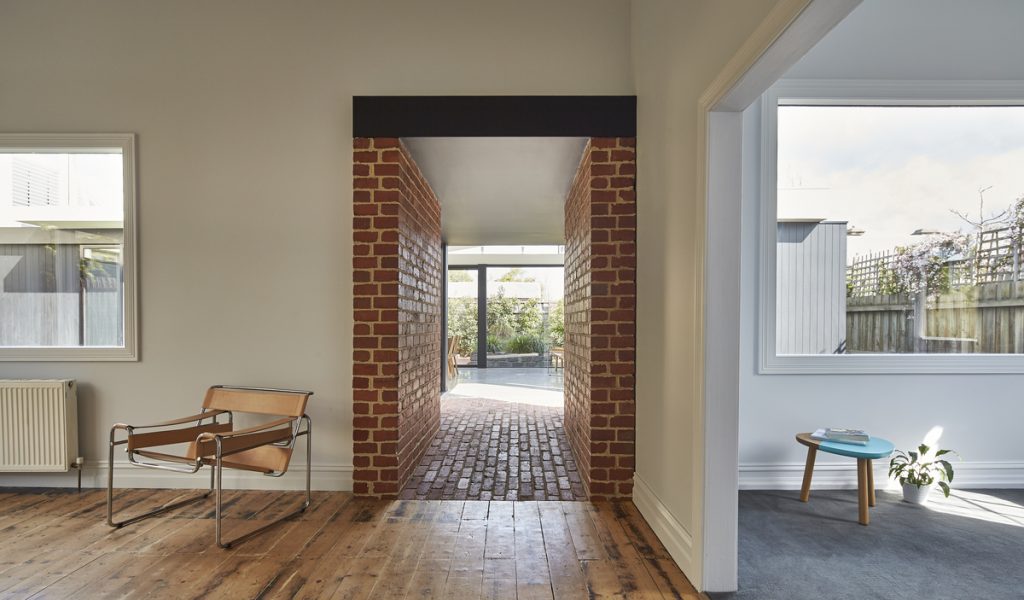

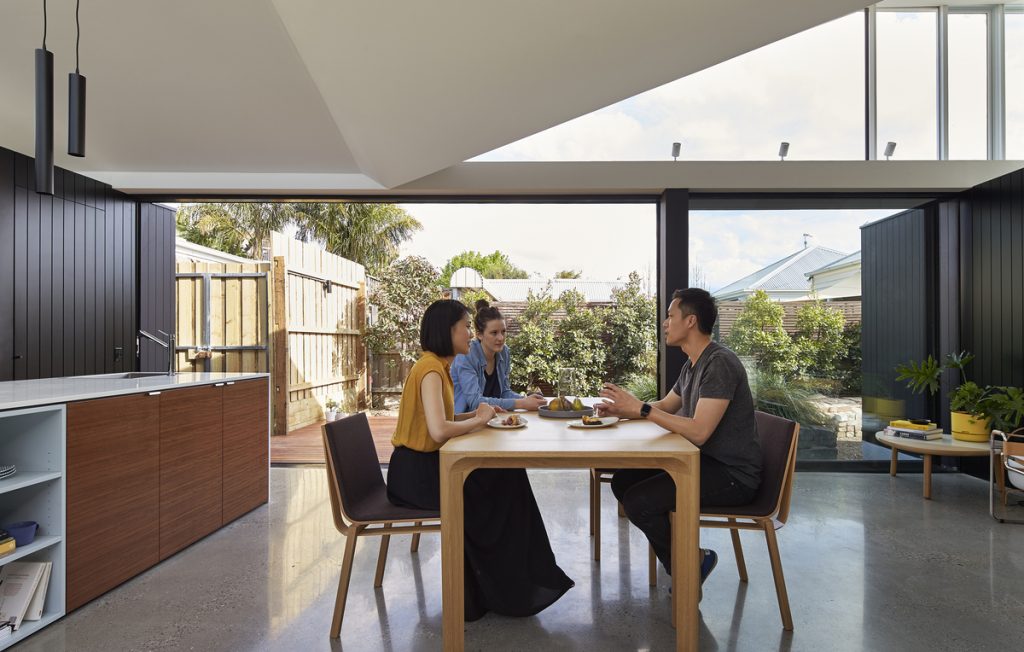
That’s why the architect’s first approach was to remove the rear lean-to and instead of extending from the existing house, they made a stand-alone structure on the front house and connected the two spaces with a central passageway. Conceptually, this allows these spaces to contrast their form and characteristic, creating an architecture that provides a clear distinction between ‘old’ and ‘new.’ Spatially, the new stand-alone living at the rear opens the central body of the site to create a north facing the courtyard, with this planning strategy we now have a new north facing rear living area, natural light into the ‘darkest’ spot of the front house and an active garden courtyard.
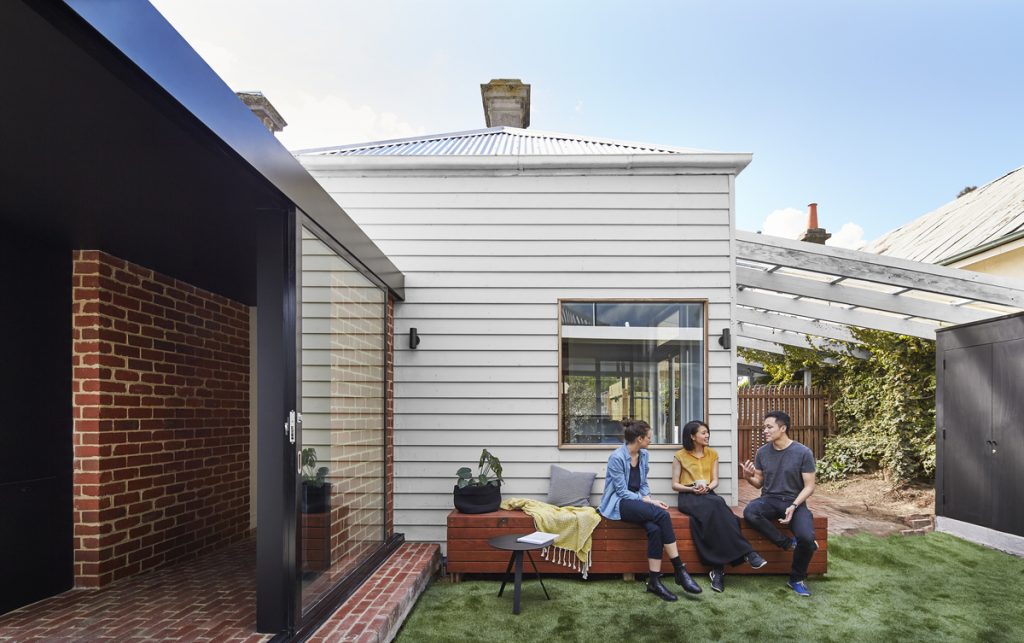
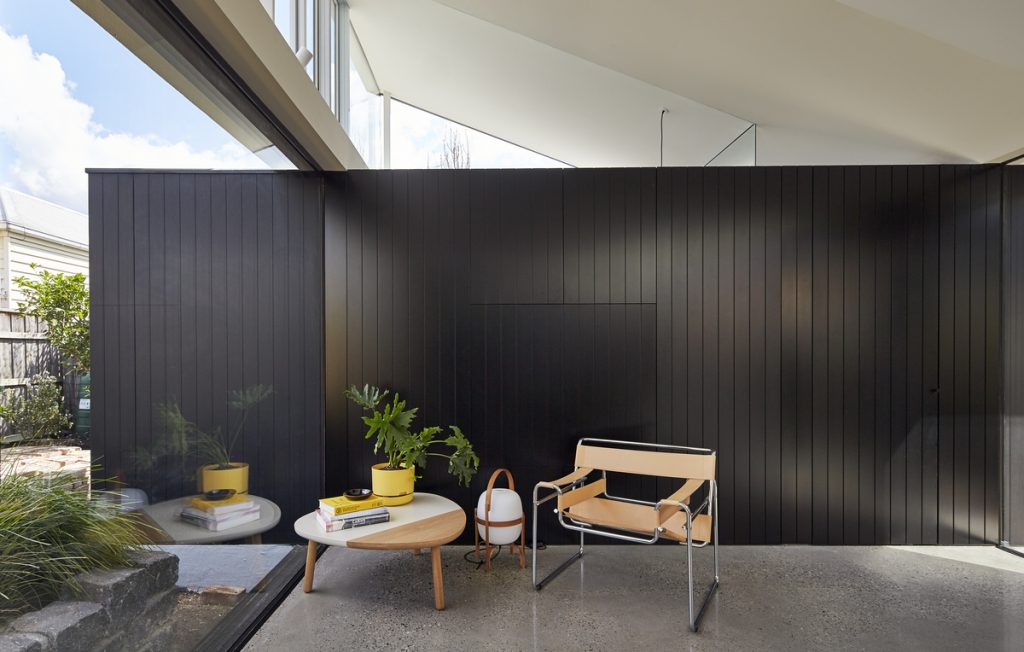
The new living area is now nestled between the rear garden and the new courtyard, creating an architecture that now physically embeds the clients in between the garden, where previously they were only next to it. We felt this approach not only respected their interest and lifestyle, but we hope it will enhance it.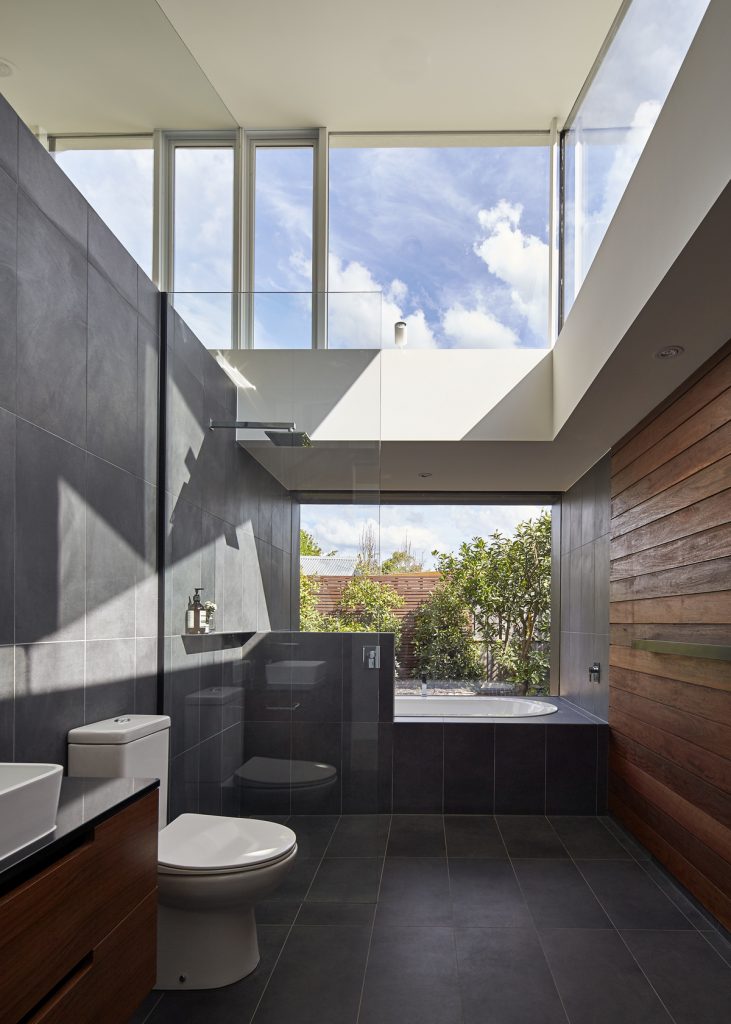
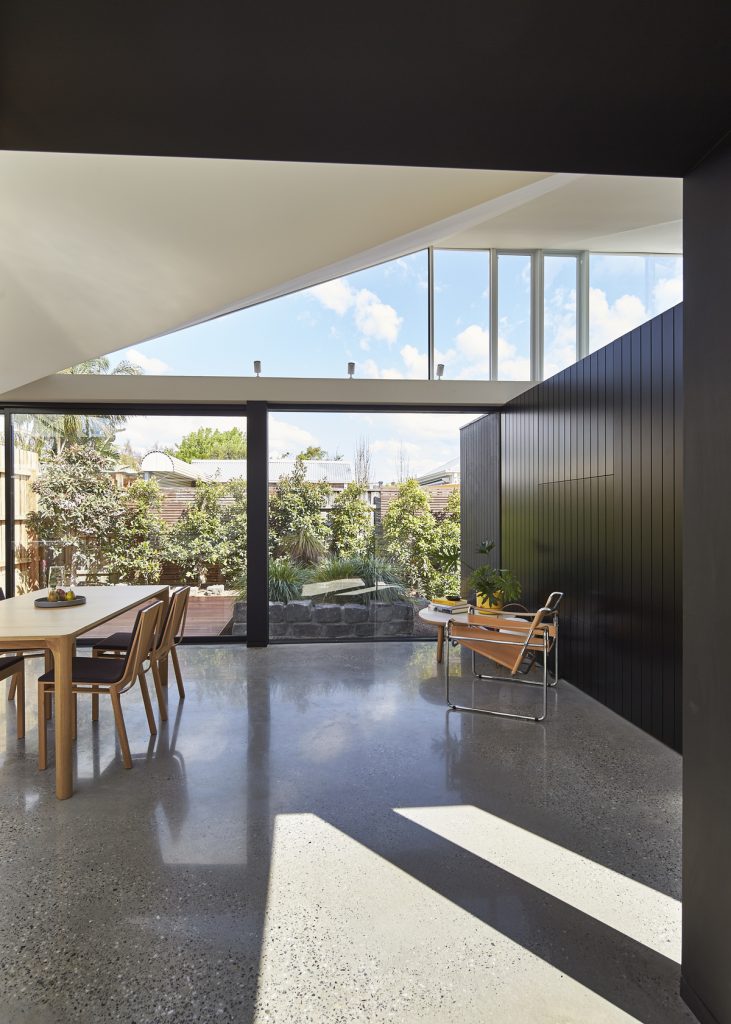
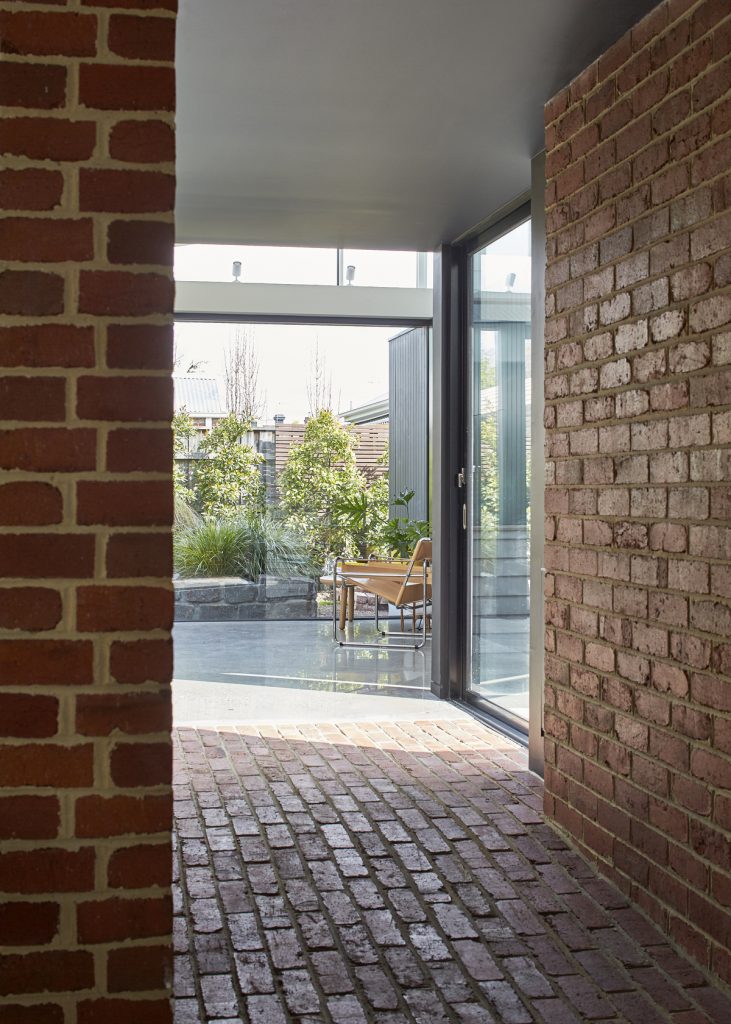
Formally the concept is constructed of 4 essential elements; the existing front house, the tunnel, the pavilion and the voids. Each of these elements is designed to be formally understood separately but knitted closely together to work with each other.
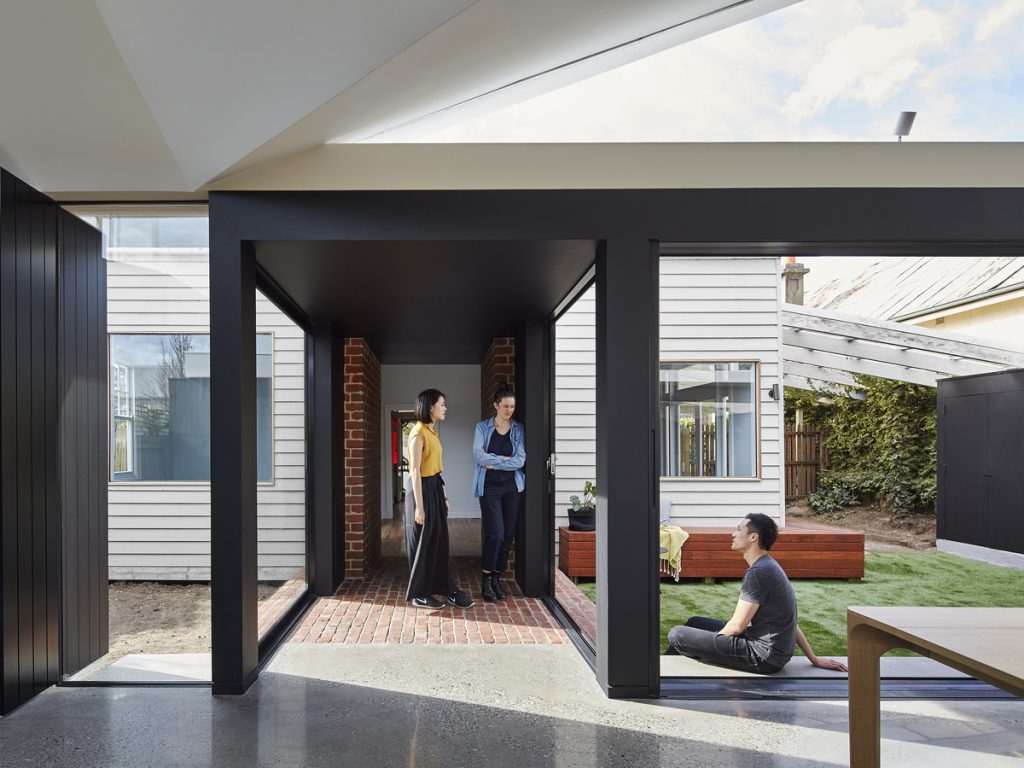
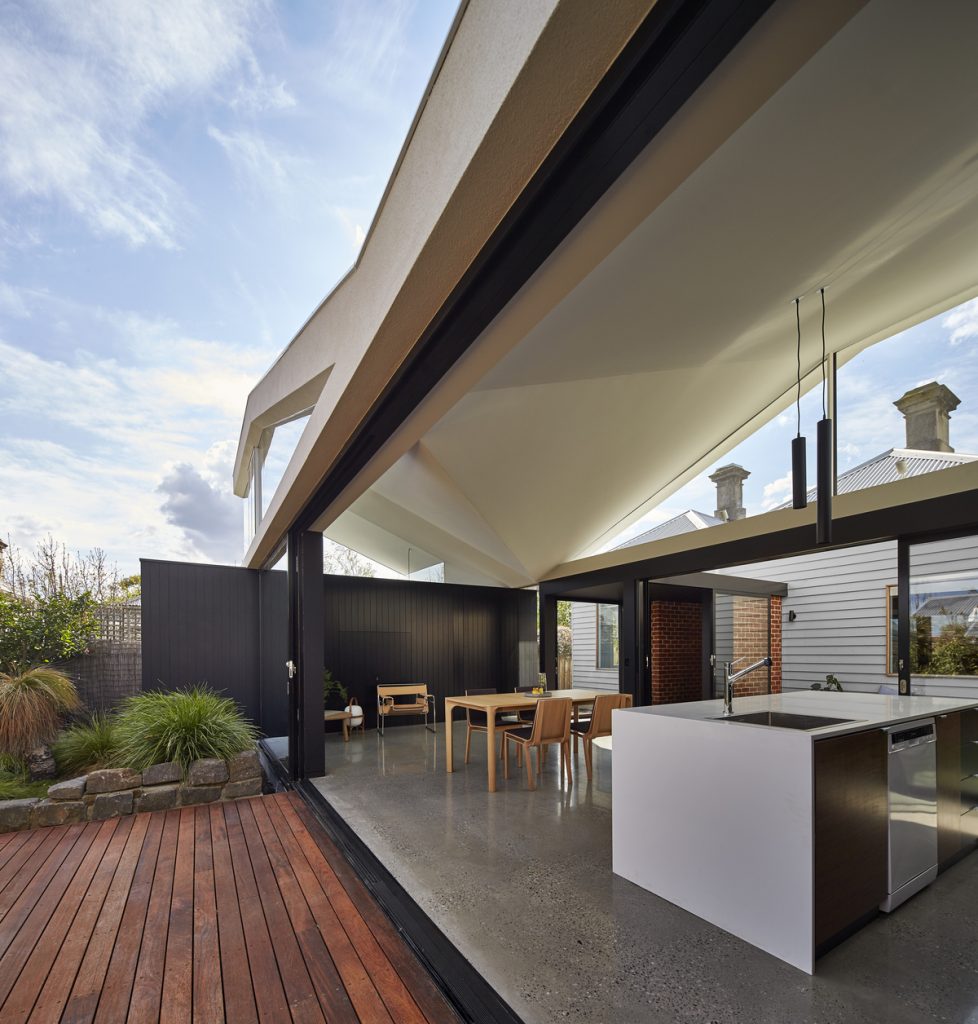
At the back of the front house, the architects made a connecting Tunnel which leads into the new living area and forms the central courtyard. The concept of the tunnel is to communicate the transition between the old and new zones; the architects built the tube in salvage brick and a glazed sliding door. The brick portion of the tunnel is designed to subtly compress the space down before releasing the clients into a high and light led living room. The bricks also give a sense of weight, density and coolth, which when walking through, also momentarily shields your feelings, and similar to the physical spatial release you get from the squeeze, you also get the sensory release into the new living area and courtyard.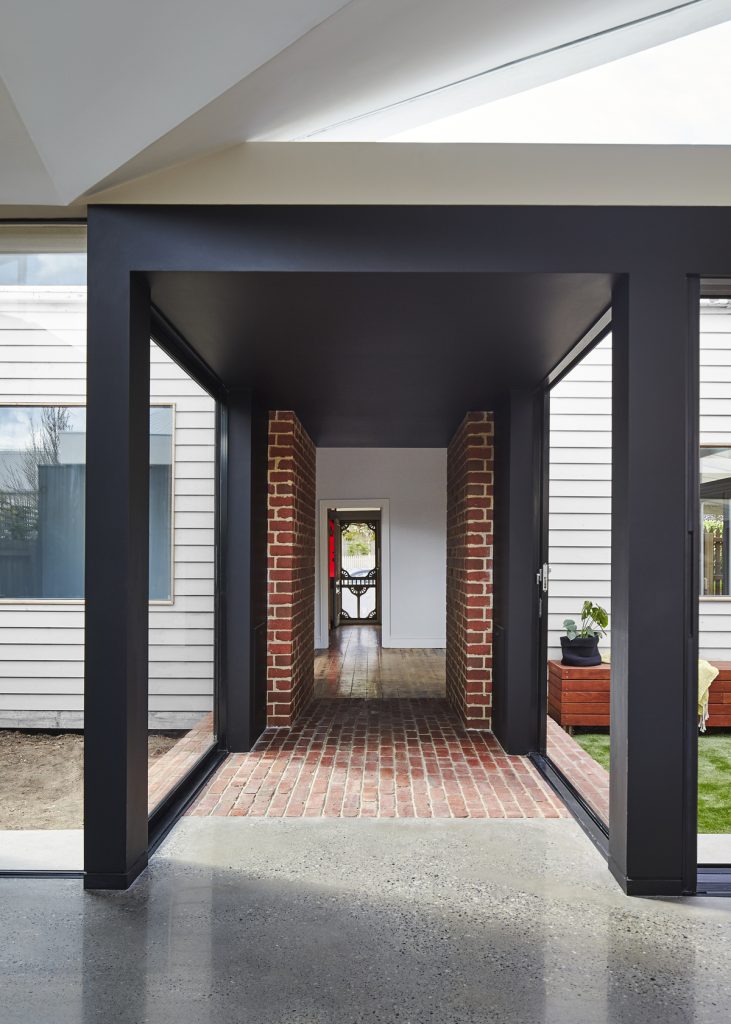
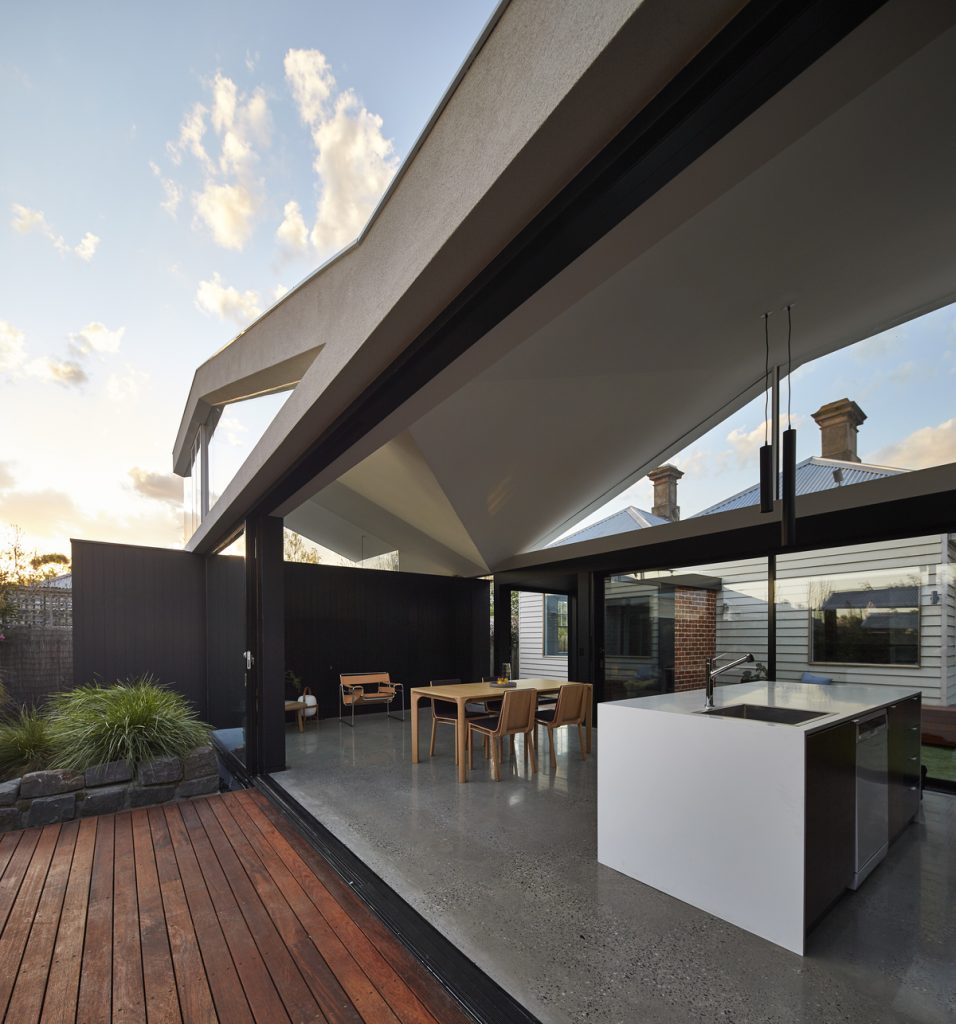
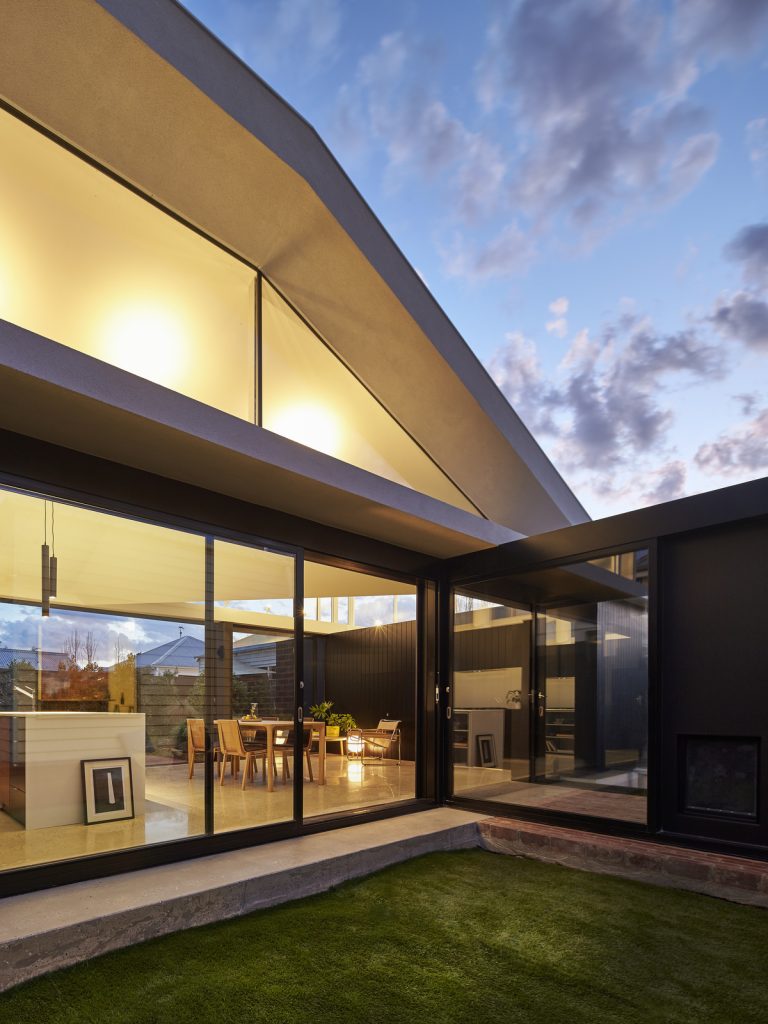
The new wing consists of a kitchen, pantry, dining, living, bath, and laundry. Unlike the brick tunnel, the concept of the acquisition is to borrow qualities you may find in a park pavilion. Rather than creating a wall space with windows and doors punched out, we decided to mirror it and place objects (black boxes), lines (structure) and planes (roof) to hold the space, with the spaces between glazed. By reversing this approach, we visually open the living areas to the garden, the ‘walls’ are now the garden itself, which subtly changes throughout the day, evening and season.
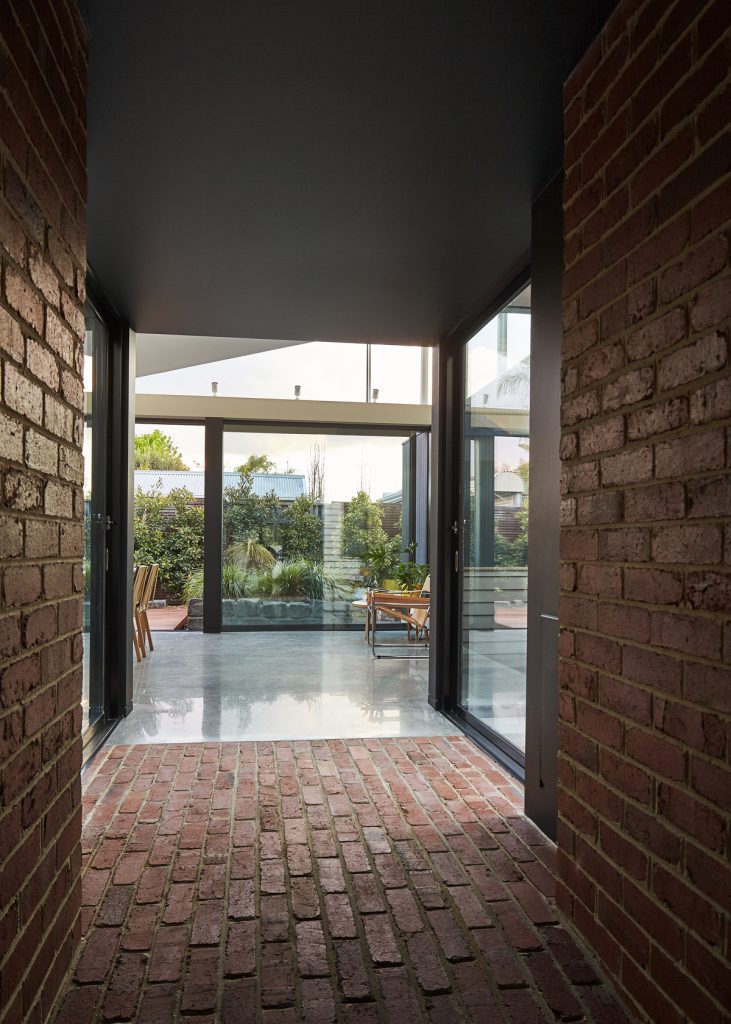
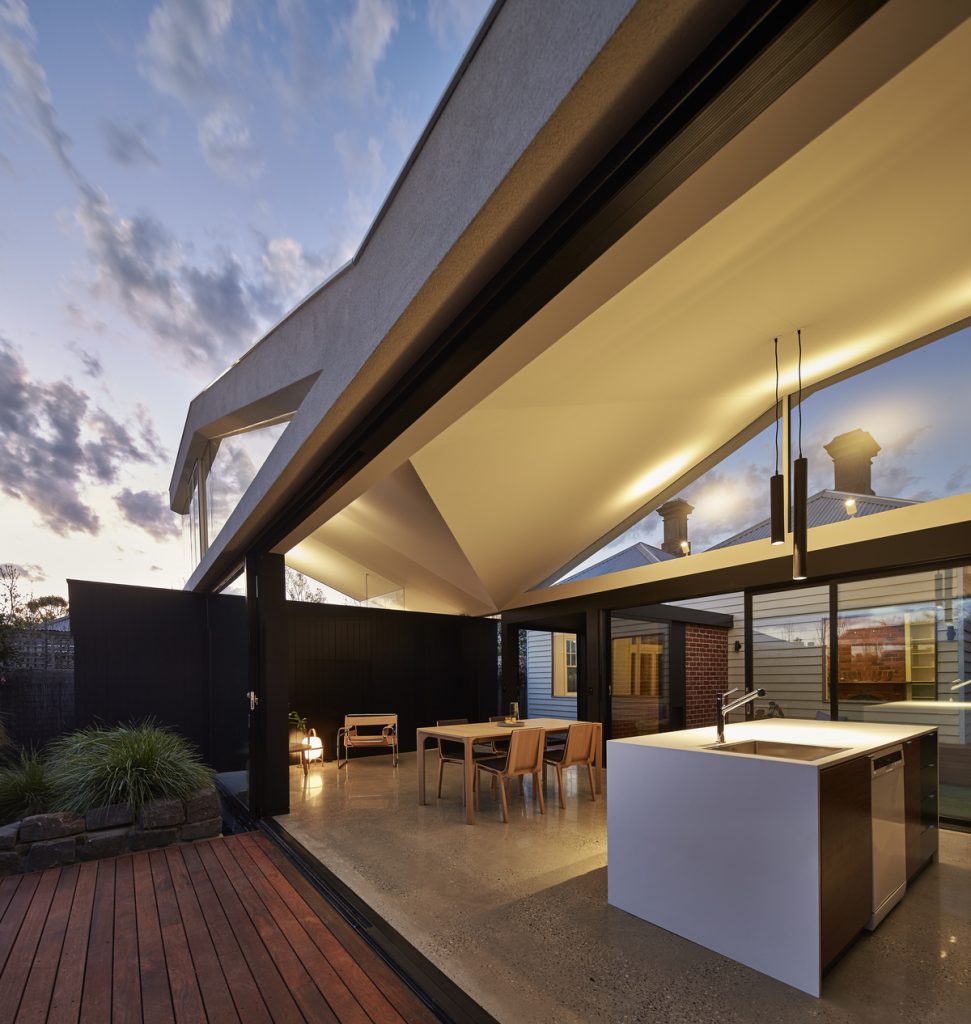
The roof form kicks up form an asymmetrical buttery roof, the combination of the raked ceiling and high windows softly diffuses the natural light down into space and to gently lift the space up. The ceiling continues to spread light in the evening with a set of track lights that bounces light back down into the living areas. It also helps to soften the light and creates quite a sculptural element in the evening.
The Void is the space in the garden between the spaces; there are four sets of sliding doors which are designed to push away wholly which is used to enhance the ‘pavilion’ concept. With the doors fully opened, the interior space becomes incredibly permeable and invites the garden through space and to become the ‘hero’ of the story.
Photos by Peter Bennetts
